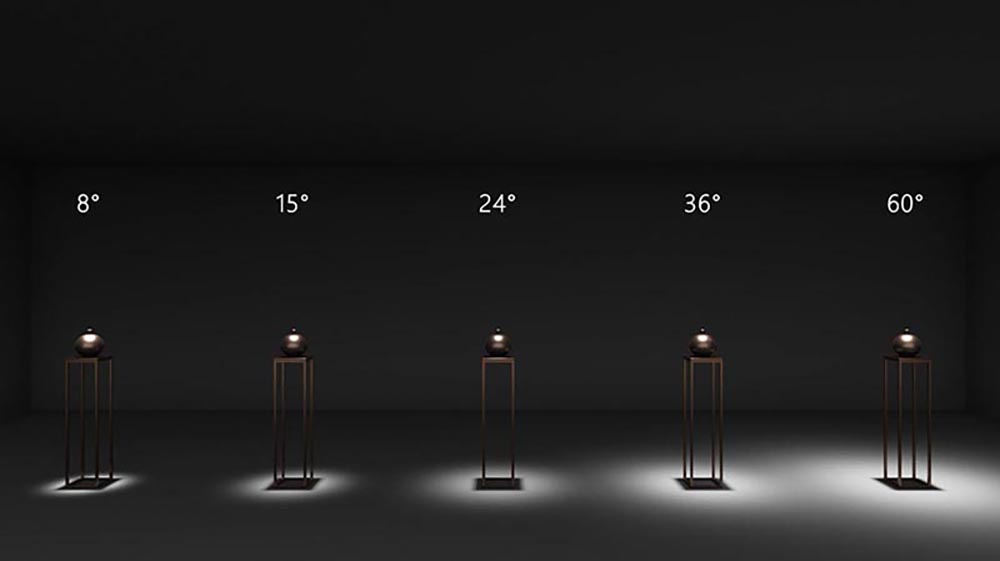
From retail shops to offices, commercial buildings to private houses, LED downlights let you deliver beautiful, bright, even, and shadow-free light while only using a fraction of the energy typically required for traditional lighting installations.
LED downlights are extremely versatile and can be used in a wide variety of applications. Depending on your lighting objectives, LED downlights can be used for: general lighting in corridors; ambient or decorative lighting with wall washers; task lighting in offices; and accent lighting with gimbal LED spotlights.
It can be difficult to make a decision when buying LED downlights because there are so many different types of downlights on the market. Further, the best choice will be determined by the specific lighting requirements of each project. Through this article, however, we hope to give you a clearer picture of what to look for, and how to arrive at a decision when choosing LED downlights.
An important spec to review, lumens are the measurement of the total amount of light emitted from a light source. However, please note that when measuring the brightness of an area such as a working table, a checkout counter or a reading surface at a bookstore, footcandle or lux is used. As a general guide, below is a table of brightness level recommended by AZ/NZS 1680.1:2006 (a commonly-used lighting standard) for different types of activities:
| Class of Task | Recommended Illuminance | Activities |
|---|---|---|
| Movement / Orientation | 40 lux | Corridors, walkways |
| Rough intermittent | 80 lux | Loading bays, locker rooms |
| Simple work | 160 lux | Canteens, entrance halls |
| Moderate easy | 240 lux | Cashier counters, food preparation |
| Moderate difficult | 320 - 400 lux | Reading, writing and office tasks |
| Difficult | 600 lux | Drawing boards, inspection tasks |
| Very difficult | 800 lux | Fine inspection |
| Extremely difficult | 1200 lux | Graphic art inspection, hand tailoring |
| Exceptionally difficult | 1600 lux | Jewellery and watch making |
Wattage measures how much energy is consumed by a light source. Although it is still used in LED lighting products, it does not reflect the actual brightness of the light like it did for incandescent bulbs. Wattage can be calculated with lumens to measure the energy efficiency of a LED bulb compared to a traditional lighting source. For example, a 7-watt LED bulb that generates 600 lumens is 88% more energy efficient compared to an old incandescent GLS bulb, which requires 60 watts to generate the same level of brightness. Even between different LED lights, the energy efficiency can be different, and lumens per watt can be used to calculate the energy efficiency of the products.
Beam angle is another critical factors when choosing the correct LED downlights. Beam angle is a measurement of how widely the light is distributed down onto a surface. Your choice of beam angle will depend on the use of the light. For example, if your lighting objective is to simply illuminate a corridor, then choosing a beam angle of 90 degrees and above could be an intelligent choice. In this manner, you will evenly distribute light throughout the space in both the corridor and on the wall. However, if your downlights are for use in office or kitchen space whereby task lighting is required, then the beam angle should be 60 degrees or below. This will create a greater concentration of light in the working area. High-ceiling above 3 meters is another good place to choose narrower beam angles. Otherwise, light will be dispersed to air and leave the ground area dark. Accent lighting requires you to calculate your desired beam angle based on the size of the object or area and the distance between downlight and the object.
To achieve a constant light level on surfaces with minimal shadows or glare spots, you will want to keep your downlights evenly spaced apart. The spacing of your LED downlights will also have an effect on the brightness of your installation. To determine the spacing measure, you must first determine the lux level on the surface you wish to illuminate. Then determine how many downlights you will need to produce it given the beam angle and the size of your space.

You can use the following simple table to choose beam angles and decide the downlight spacing for evenly-distributed light:
General Lighting
| Ceiling height | Beam angle | Downlight spacing |
|---|---|---|
| 3 meters | 60° to 120° | 1.5 m to 3 m |
| Ceiling height | Beam angle | Downlight spacing |
|---|---|---|
| 3 meters | 45° to 60° | 1.5 m to 2 m |
| 4 meters | 45° to 60° | 2.5 m to 3.5 m |
| 5 meters | 45° to 60° | 3 m to 4.5 m |
| 6 meters | 45° to 60° | 4 m to 5.5 m |
| 7 meters | 30° to 45° | 3 m to 5 m |
| 8 meters | 30° to 45° | 3.5 m to 5.5 m |
| 9 meters | 30° to 45° | 4 m to 6.5 m |
| 10 meters | 30° to 45° | 4.5 m to 7 m |